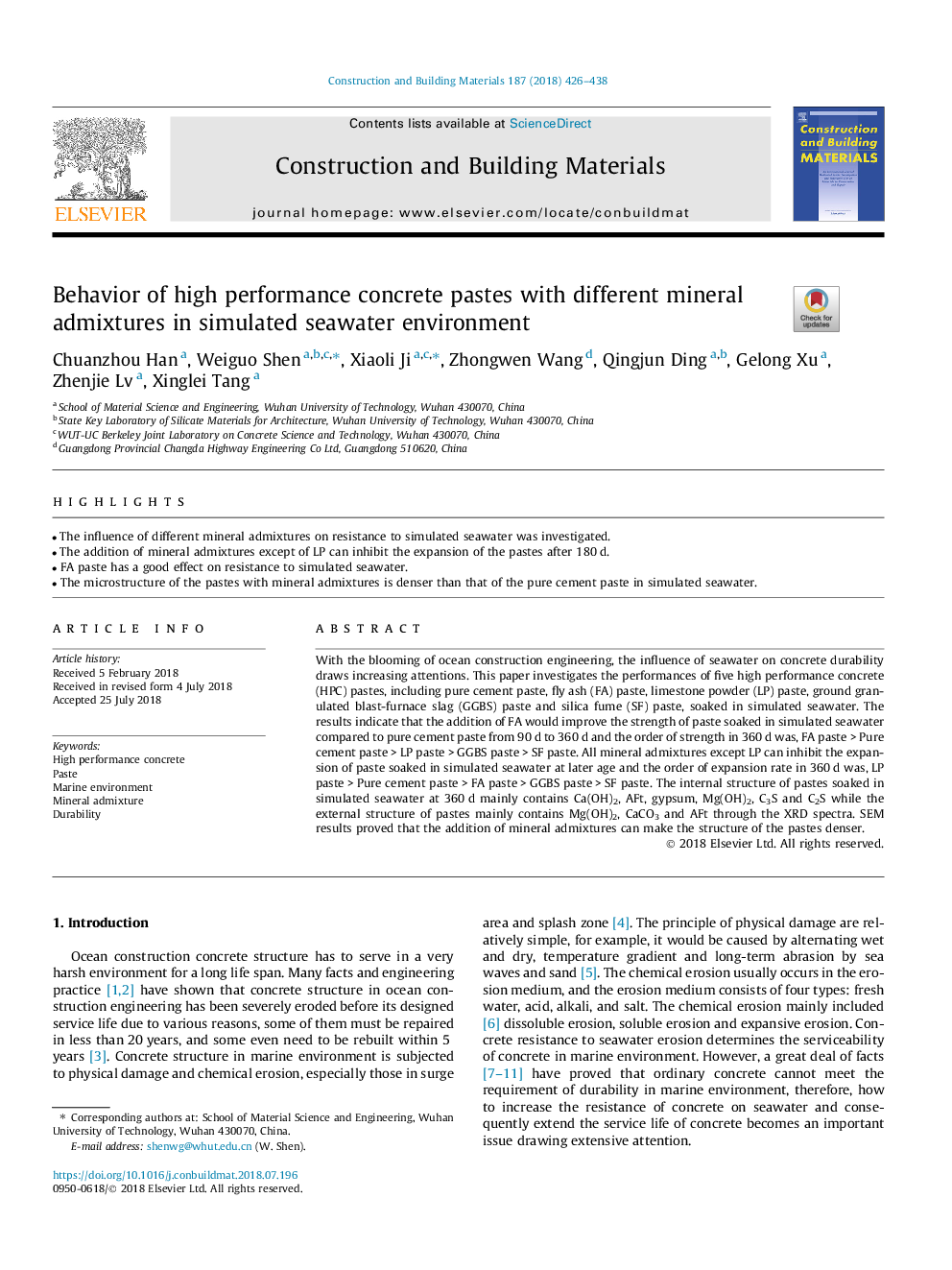| Article ID | Journal | Published Year | Pages | File Type |
|---|---|---|---|---|
| 6711374 | Construction and Building Materials | 2018 | 13 Pages |
Abstract
With the blooming of ocean construction engineering, the influence of seawater on concrete durability draws increasing attentions. This paper investigates the performances of five high performance concrete (HPC) pastes, including pure cement paste, fly ash (FA) paste, limestone powder (LP) paste, ground granulated blast-furnace slag (GGBS) paste and silica fume (SF) paste, soaked in simulated seawater. The results indicate that the addition of FA would improve the strength of paste soaked in simulated seawater compared to pure cement paste from 90â¯d to 360â¯d and the order of strength in 360â¯d was, FA pasteâ¯>â¯Pure cement pasteâ¯>â¯LP pasteâ¯>â¯GGBS pasteâ¯>â¯SF paste. All mineral admixtures except LP can inhibit the expansion of paste soaked in simulated seawater at later age and the order of expansion rate in 360â¯d was, LP pasteâ¯>â¯Pure cement pasteâ¯>â¯FA pasteâ¯>â¯GGBS pasteâ¯>â¯SF paste. The internal structure of pastes soaked in simulated seawater at 360â¯d mainly contains Ca(OH)2, AFt, gypsum, Mg(OH)2, C3S and C2S while the external structure of pastes mainly contains Mg(OH)2, CaCO3 and AFt through the XRD spectra. SEM results proved that the addition of mineral admixtures can make the structure of the pastes denser.
Related Topics
Physical Sciences and Engineering
Engineering
Civil and Structural Engineering
Authors
Chuanzhou Han, Weiguo Shen, Xiaoli Ji, Zhongwen Wang, Qingjun Ding, Gelong Xu, Zhenjie Lv, Xinglei Tang,
